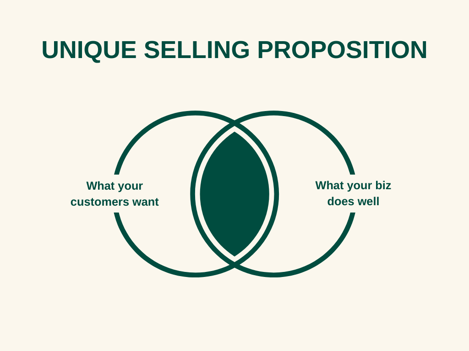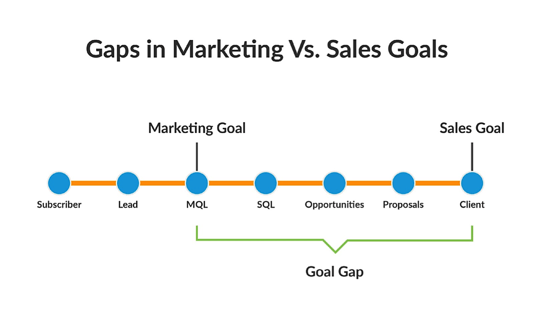5 Digital Marketing Challenges faced by Demand Gen Managers (With Solutions)

Introduction
No marketing strategy is airtight; there are bound to be some bumps along the way.
 Source: Giphy
Source: Giphy
Digital marketing challenges faced by demand generation managers.
Not enough traffic to the website
So, you already have your marketing strategies mapped out for your business. You have a buyer persona in place; your website is up and running. The only problem is you notice you’re not getting enough traffic as you’d hoped to your website.
Many businesses have made the switch to online due to the pandemic. Thus, creating competition for ad targeting on social media sites. According to Hubspot, more than 80% of marketers in 2021 use Facebook and Instagram to generate brand awareness. So, how can a marketer stand out in such a bloated medium?
First, create a Unique Selling Proposition for your business. You already know what you’re selling; now you have to market what you're selling. Next, think of what sets your brand apart from your competition. Then, start with researching the competition and their offerings.
 Source: Shopify
Source: Shopify
An example written by Bob Bly in The CopyWriter’s Handbook states, “The USP for M&M’s is that the chocolate is surrounded by a hard candy shell so it won’t melt in your hand.”
A strong USP sets the stage for the content you’ll create to generate brand awareness.
Second, go back and analyze your buyer persona. An ICP (Ideal Customer Profile) tends to change after a while; going back and auditing your efforts helps keep your company on track.
 Source: Medium
Source: Medium
A well-defined buyer persona is data-driven. Conduct customer interviews to find similarities or differences between your customer base. From there, use what you learned to segment your buyer personas and target them with personalized messaging. Some questions you can ask during your customer interviews are:
- How satisfied were you with the services we provided? Could you give an example of how our company helped solve the challenges you were facing?
- What technologies has your company adopted, and how have they optimized the way you work?
- Where do you see your company in X amount of months? Are there any specific goals you wish to meet?
- How do you, or your company, make a purchase decision?
Create a spreadsheet to host all of the notes you gathered from your customer interviews. Note the demographics of each customer, like their company size and location, to get an idea of similar companies you may want to target.
The customer interview process is very similar to the process of qualifying leads through discovery calls. Take note of the techniques used, like asking questions on purchasing decisions and company goals.
Once you're confident your ICP is made up of only data and your USP is solid, you can feed your audience content that’s worthy of their time.
Third, create engaging and helpful content to build authority and thought leadership among your audience. If you’re just starting, it’s best to start by publishing content related to your niches, such as “How To” posts and industry news. Then, as your brand starts to gain more recognition, you can begin to advertise your services. Neil Patel suggests joining social media pages related to your niche and then sharing helpful information in these groups.
Lastly, focus your marketing efforts on the right platform to reach the right people. For example, according to Hubspot, “the demand for longer videos increased 140% in 2020 compared to 2019.” For instance, if your buyer persona is in their 20s, you might consider starting a youtube channel for your brand based on “how-to” vlogs.
Struggle to keep current customers
If you struggle to keep current customers, it might be you’re focusing too much of your efforts on generating new customers. However, existing customers need nurturing and fresh content too! After all, you want your current customers to have a positive experience with your brand so they can spread the word about your products and services.
See what your customers are saying about your brand on social media and find ways to create a two-way conversation with your audience. For example, you could conduct polls, surveys and ask customers to review your brand. Then, respond to and resolve customer complaints and inquiries as soon as possible.
For brands that have a large customer base, create a ticketing system for customer inquiries or complaints. This way, the customer’s request won’t get buried in the company inbox. Also, implement a chatbot on your website so visitors can get immediate answers to any questions they may have.
 Source: Shopify
Source: Shopify
Miscommunication across teams
Teams should work together, not in silos. Miscommunication among team members leads to less productivity. For example, when marketing and sales teams work together toward lead generation efforts, there is less room for error and a higher chance of closing deals.
I’ve mentioned the buyer’s journey before. It’s an inverted pyramid that works by garnering the most leads at the top of the funnel and filtering out unnecessary leads toward the bottom of the funnel. Ending with closed or sometimes missed opportunities.
During the buyer’s journey, marketing brings in the most leads first before handing them onto sales. The sales team then persuades the customer into making a purchasing decision. During the handoff process, both marketing and sales should get together and discuss when the lead is ready to be marketed to and at what point the lead is ready to be sold to.
If there’s any miscommunication between the two teams, marketing could end up passing on a lead to sales that isn’t ready to buy, which could result in a missed opportunity. On the same note, if the sales team does not communicate well with marketing, they won’t have enough knowledge on how many times this lead has been marketed to, what content they’ve come across, what product they’re most likely to buy. Which again leads to a missed opportunity.
As a best practice, teams should meet regularly to discuss important topics and be on the same page regarding goals, and to overcome the digital marketing challenges.
 Source: HubSpot
Source: HubSpot
On the same note, all teams within an organization should practice data transparency when appropriate. For example, both marketing and sales should have access to edit content on the CRM. Sales should also share KPIs with marketing to ensure all teams work together toward the same goal.
No idea how to measure goals
As a rule of thumb within marketing, a business goal has to be a SMART goal.
- Specific
- Measurable
- Attainable
- Relevant
- Time-based
Ensure your business can execute the company goals in a successful manner by using the SMART technique as a guide.
For example, you’re a B2C company that wants to increase revenue. While this is a common goal for all companies, it’s not specific enough. For example, increasing company revenue entails increasing quality leads to improve the likelihood of closing more deals, optimizing workflows, etc. Well, stick with increasing website traffic as the starting goal. So now pick a percentage to increase website traffic by, say, 30% in 6 months.
Now, look at how you’re going to measure that goal. You could do this by monitoring your website visits daily. Next, ask, can the goal realistically be met in the proposed timeframe? A goal that’s too big in scope won’t be attainable.
Also, ask, Is the goal relevant? Does it align with the bigger company goal of closing more sales? And lastly, the goal has to be time-based, set a timeline, and stick to it.
An unorganized tech stack
A tech stack is a marketer’s toolbox used to complement digital campaigns through automation or optimization. An unorganized tech stack can lead to increased costs and sluggish workflows. Having too many sets of tools can confuse team members and slow down activities. At the same time, it can be expensive to keep up with so many software subscriptions.
A best practice is to keep with the basics and add to your tech stack once you feel you can’t squeeze out any more optimization from your current stack. According to Marketing Insider Group, essential tools to any marketing tech stack are:
- A content management system: A website that hosts all of your content.
- A customer relationship management system: A spreadsheet or software where you can monitor customer interactions.
- An email marketing software: for automating emails.
- Website analytics software: monitor how many people visit your website, who they are, what they click on etc.
- Social media management software: monitors post interactions, posts popularity, and automates posts.
- Event management software: To oversee webinars or in-person events.
- Graphic design software: To create infographics.

Source: chiefmartec
Parting Words
Once you have a set of tools in place, create video training sessions to educate current and future staff members on how to use each tool.
Having a marketing strategy in place is only half of the battle. Audit your efforts and practice continual optimization to build a successful marketing strategy.
Need a partner to help you sail through all your digital marketing challenges?
Get in touch with Fractional CMO, today!







